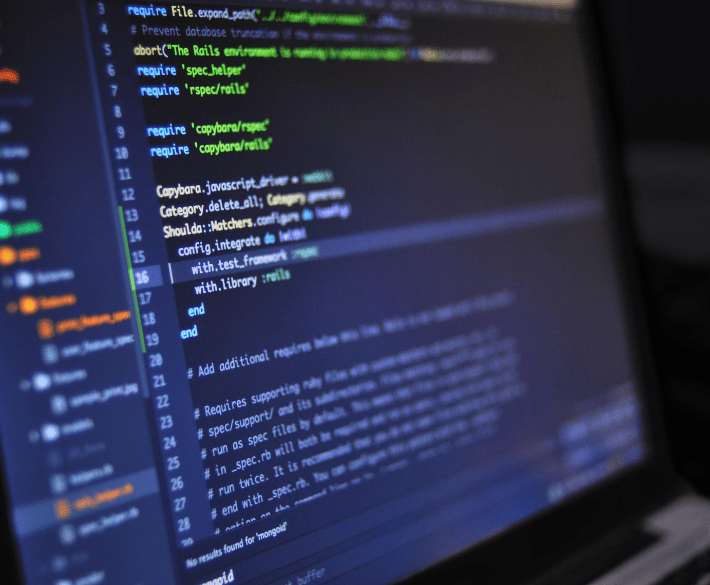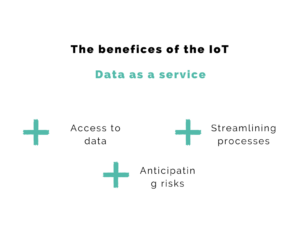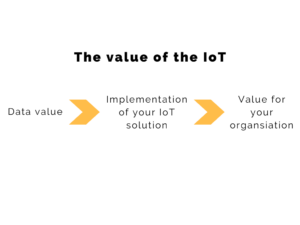“Forget tech and think value added.” This title may come as a surprise from us tech enthusiasts. However, there is something even more important than tech: the success and sustainability of projects. And for that, we need to broaden the
“Forget tech and think value added.” This title may come as a surprise from us tech enthusiasts. However, there is something even more important than tech: the success and sustainability of projects. And for that, we need to broaden the

“Forget tech and think value added.”
This title may come as a surprise from us tech enthusiasts.
However, there is something even more important than tech: the success and sustainability of projects.
And for that, we need to broaden the framework and not fall into taking shortcuts.
The success of an innovative project is much more complex than assembling tech expertise.
That’s what we’ll explore in this article.
Far be it from us to give you a masterclass on IoT, don’t worry!
But let’s start with a prerequisite to understand each other.
The Internet of Things (IoT) is enabling innovation and transforming every industry in the world in one way or another.
The IoT has multiple uses. We can think of consumer-connected objects, consumer goods, but also home automation, mobility and industrial applications.
It is a means. A tool.
The value of an IoT solution is the information, regardless the application sector.
To be more precise, the IoT enables the extraction, generation and exploitation of vast quantities of data.
Data is one of the most valuable resources. It is the data that adds value to your smart object or solution.
This is where we come back to the title of this article.
When a company invests in IoT and embarks on a smart object project, it should not do so simply for the love of technology ❤️.
Also, beware of blind beliefs in the fact that new connected products will instantly solve operations or maintenance problems 🪄.
What will really make your connected solution valuable and effective is the data and information your devices will access.
That’s where the real value of your product lies.
And that’s where you’ll get the full potential out of your IoT solution.
The IoT is more than just a ‘transformative’ technology. It is a tool that, when properly applied, contributes to virtually unlimited transformations and improvements for decades to come. To be even more concrete, the IoT could improve your bottom line by as much as ‘30% in labour cost savings or 10-20% in increased farm yields.

Let’s go further.
Data is collected in the field, organised and transformed into knowledge that can help you make better and faster decisions.
This is where the IoT comes in.
An IoT solution will generate benefits through data extraction.
Data (or information) with a value far exceeding the cost of extraction.
This is how you fuel a cycle of continuous improvement and value creation.
The data extracted and collected by IoT solutions bring value to the business in two main ways:
Good IoT use cases are built around a mix of these two forms of value.
Let’s take an example of a manufacturer setting up a real-time tracking system for its pallets through a connected system.
The manufacturer will obtain value through:
In summary, the value of the data will tell you the use case for your IoT solution that creates value.

To generate the value of your IoT solution, you need to think of the IoT as a data extraction tool.
Rather than asking “how do I apply IoT in my organisation?
It is more relevant to ask “what data would we like to have today and how can the IoT help us get it?
From there, it’s simply a matter of finding the easiest way to implement your IoT solution without getting too bogged down in the technology aspect of the solution or processes.
In other words, the potential value of your IoT solution lies in its applications rather than in the technological function of your solution.
In other words, the value is in the uses rather than the functionality.
Let’s not stop there!
When in the design phase of your intelligent product, to ensure that your ideas are consistent with the field, it is essential to integrate considerations around its uses as early as possible.
Talking about uses means asking the following question: How can we design the best product for the user?
It is the use of the object, the product and its life in the field, according to all the user profiles in contact with it, that must guide you.
To answer this, let’s take the opposite scenario. A project that would be carried out with functionality and technique in mind, with a little bit of final added value, but leaving out the uses.
In short, you will design the product, go through prototypes and then go to the industrialisation phase.
Sooner or later, you will unveil your product to the user through one or more deployment phases.
At this point, you may be faced with a lot of feedback and unpleasant surprises.
There are many examples of this type of discrepancy or “gap” between the initial idea thought up by the project leaders and the uses or needs on the ground.
We talk about it in a webinar co-hosted with Valentin Lecompte from Kuantom, a startup that has developed a connected cocktail solution to bring the art of mixology to everyone.
Also, as you may have already noticed, the later the iterations, the more costly in time and money they are.
At the end of the project, iterations put the commercial launch and its success at high risk.
We discuss this in more detail in this article on IoT deployment.
Of course, some changes can be made after the fact, remotely, through updates (if the possibility to make remote updates has been foreseen in the design phase).
However, unfortunately, we can also have physical problems and that can be catastrophic. This would then require the products to be recalled
If there is only one thing to remember from this article to guide you in your IoT project:
It is strategic to make the link between the business idea of the product and the reality of the needs and uses as early as possible in your project.
Expert IoT suppliers can really help you achieve this thought process and this logic of integrating your IoT solution into your value scheme.
How can they help?
By accompanying you in your IoT transformation; from the diagnosis of your IoT solution to the deployment.
At Rtone, the various projects we have supported in recent years have enabled us to develop a method of supporting projects at different levels of maturity.
If you would like to talk to us about your project, contact us here.
Un peu de lecture
Des articles, des podcasts, des webinars… et surtout des conseils pratiques ! En bref, une collection de ressources pour mener à bien votre projet.